Understanding the Scope of Mental Illness Worldwide
Mental illness and mental health conditions affect a significant portion of the global population, posing a serious challenge to public health systems worldwide. As data continues to pile up from diverse regions, it reveals pressing issues around prevalence, treatment gaps, and socio-economic impacts. This comprehensive review synthesizes current statistics, research, and trends to shed light on the worldwide mental health landscape and explore the critical needs for effective intervention and policy reforms.
Prevalence and Incidence of Mental Health Conditions Globally
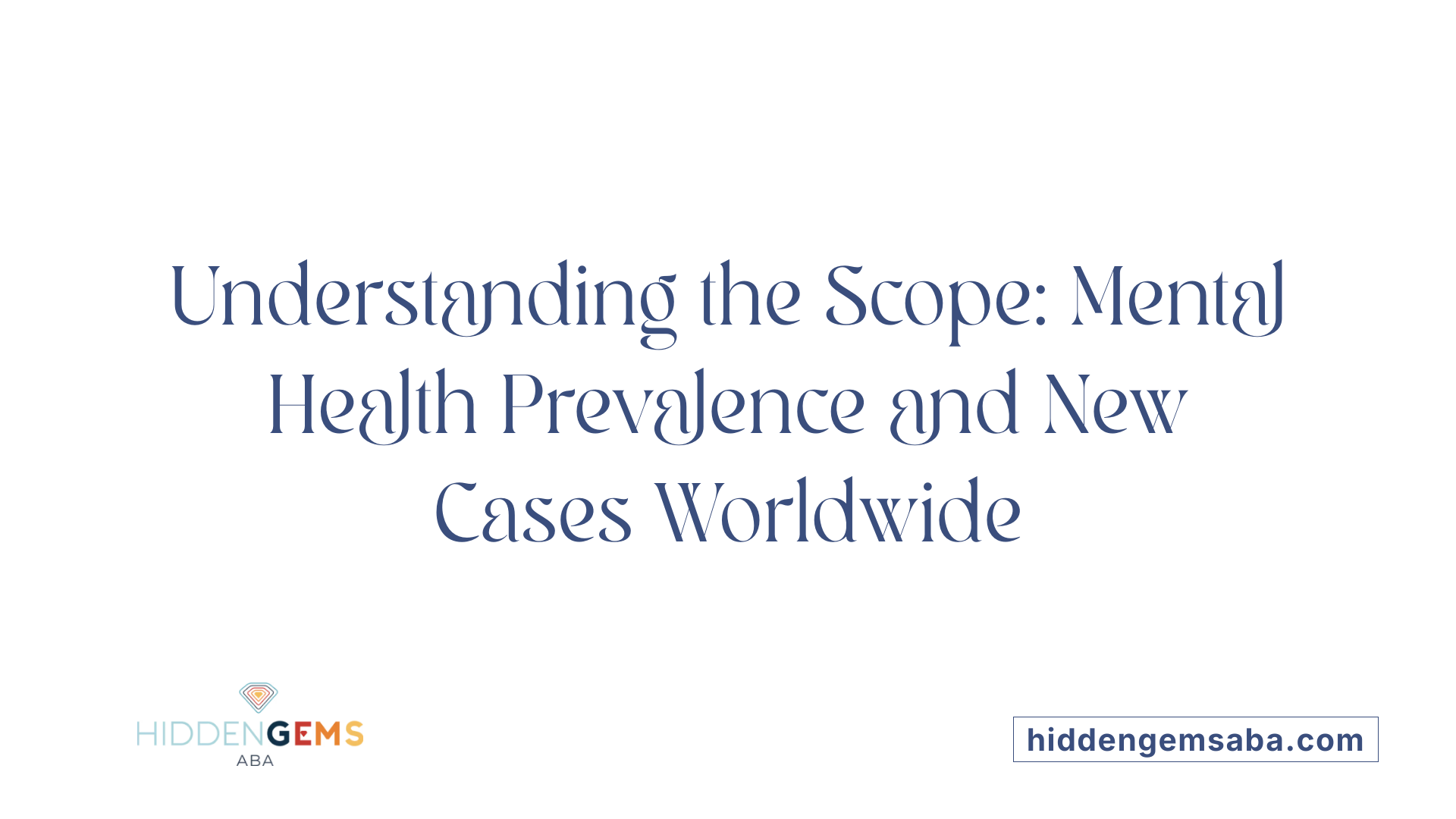
What is the global prevalence and incidence of mental health conditions?
Mental health conditions are widespread around the world, affecting people of all ages, cultures, and socioeconomic backgrounds. According to extensive international surveys, including face-to-face interviews conducted in 29 countries, approximately 11.6% of children and youth globally experience mental disorders. Anxiety disorders are the most common, with around 84 million cases among young people, followed closely by depressive disorders.
In the adult population, the prevalence of any mental illness is estimated at about 17.6% annually. This means that nearly 1 in 6 adults worldwide suffers from some form of mental health condition each year. Women are more frequently affected than men, with higher rates of depression, anxiety, and PTSD, especially among younger women aged 18-25.
The incidence of new cases shows an increasing trend, particularly after 2010, though it is projected to decline slightly over the next 25 years. Still, due to population growth and societal stresses, the total number of cases is expected to rise. The highest incidence rates currently are observed in young adults aged 24-39, forming an inverted U-shaped pattern with increasing age.
How has COVID-19 impacted mental health globally?
The COVID-19 pandemic has significantly impacted mental health worldwide. During 2020, the prevalence of depression and anxiety disorders increased sharply, with estimates indicating a rise of over 25% for anxiety and nearly 28% for depression. These increases are attributed to factors such as social isolation, economic uncertainty, and health fears.
The pandemic not only increased the number of individuals experiencing mental health issues, but also strained health systems globally, making access to care more difficult. Millions more are now experiencing mental distress, emphasizing the urgent need for enhanced mental health services.
Overall, mental health conditions are a major public health challenge, with hundreds of millions affected globally. Addressing these issues requires improved access to treatment, early intervention, and awareness campaigns tailored to diverse populations.
| Aspect | Data | Additional Details |
|---|---|---|
| Global prevalence of mental disorders | 11.6% in children and youth | Approximately 293 million children and adolescents affected in 2019 |
| Adults with mental illness annually | 17.6% | Around 1 in 6 adults worldwide |
| Common disorders | Anxiety & Depression | Affecting hundreds of millions globally |
| Impact of COVID-19 | 25-28% increase | Especially in anxiety and depression cases |
| Young adult incidence | Highest in ages 24–39 | Following an inverted U-shape with age |
This data underscores the persistent and growing challenge mental health issues pose worldwide, calling for global collaboration and focused strategies to improve mental health outcomes.
Demographics and Affected Populations
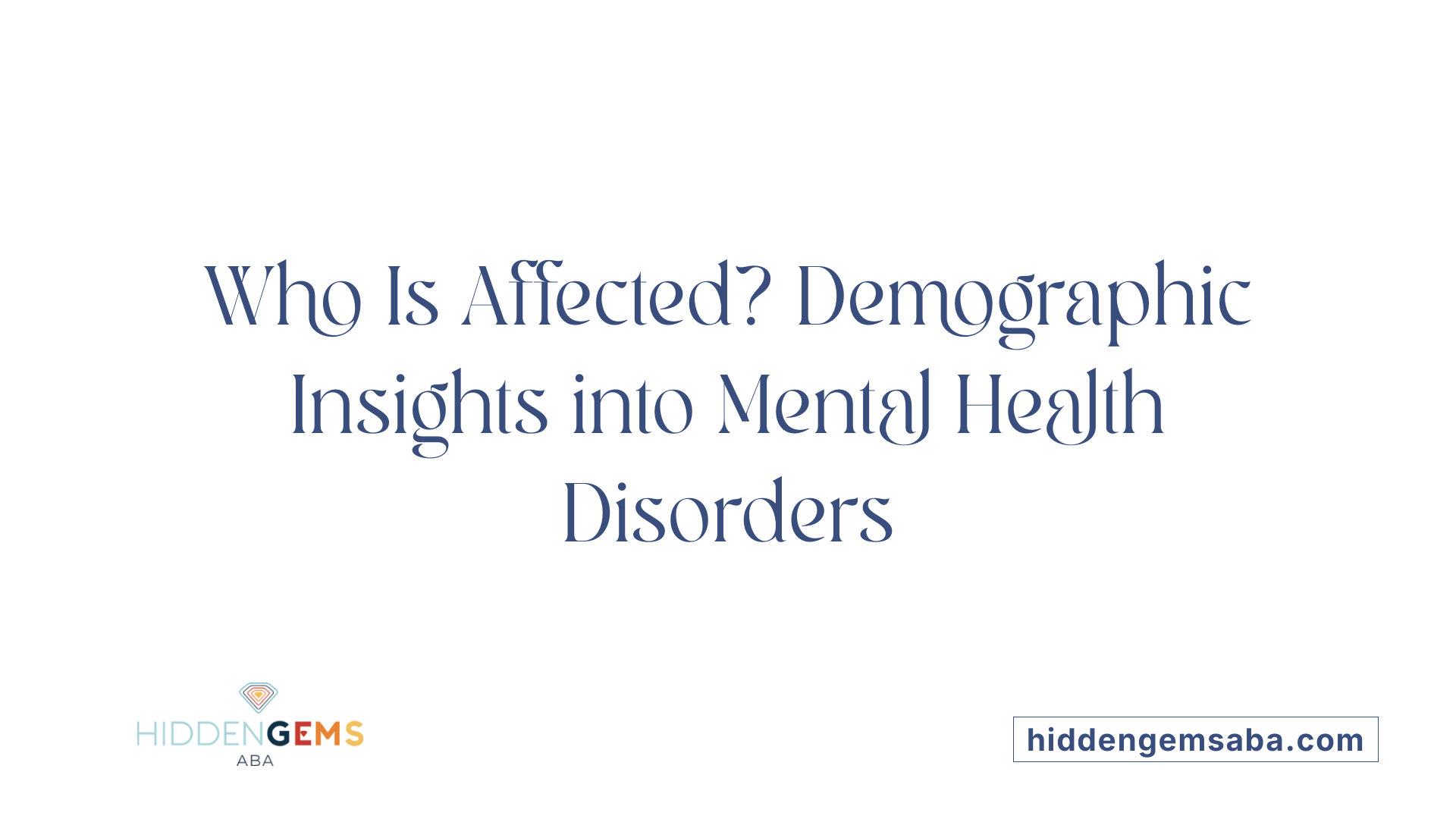
What are the demographics and affected populations of mental health disorders worldwide?
Mental health disorders impact a vast and diverse segment of the global population. In 2019, approximately 970 million people—almost 1 in every 8 individuals worldwide—were living with some form of mental disorder. These conditions are prevalent across all age groups, with children, adolescents, and young adults being particularly vulnerable. Nearly 300 million children and youths aged 5 to 24 years had at least one mental disorder in 2019, with anxiety disorders and depression being the most common, affecting around 84 million and 284 million people respectively.
The onset of mental health issues often occurs early, with over half of all cases beginning before age 14, and about 75% developing by age 24. The peak age of first onset is around 15 years, highlighting the importance of early detection and intervention.
Gender differences are evident globally. Women are more likely than men to experience depression, phobias, and post-traumatic stress disorder (PTSD). In contrast, men more frequently experience alcohol abuse and other substance-related disorders. For example, anxiety disorders affect approximately 4.7% of women compared to 2.8% of men worldwide.
Vulnerable populations such as those living in poverty, conflict zones, or marginalized communities face higher risks of developing mental health issues. Conflict-affected areas see about 1 in 4 individuals developing a mental disorder, with psychological distress being widespread among survivors. Additionally, disparities in mental health treatment persist globally, with low- and middle-income countries providing inadequate access to care; over 75% of individuals in these regions do not receive the treatment they need.
Overall, mental health disorders are a universal concern that affects individuals regardless of age, gender, or socioeconomic status. They contribute significantly to disability, reduced quality of life, and economic losses, emphasizing the need for comprehensive global mental health strategies.
| Population Segment | Prevalence/Impact | Additional Details |
|---|---|---|
| Children & Adolescents (5-24) | 11.63% prevalence | 293 million affected; anxiety disorders highest |
| Young Adults (18-25) | Highest incidence rates | Often the beginning phase of mental disorders |
| Women | Higher rates of depression & PTSD | Nearly twice as likely to suffer from major depression as men |
| Men | More common for substance abuse & phobias | |
| Low-income & Conflict Zones | Increased prevalence & untreated cases | Over 75% in low-resource settings lack access to essential treatment |
| General Global Population | 1 in 4 affected at some point | Major contributor to disability and economic burden |
This information underscores that mental health disorders are pervasive and affect affected populations worldwide. Understanding demographic patterns helps tailor prevention and treatment efforts effectively.
Types and Categories of Common Mental Disorders
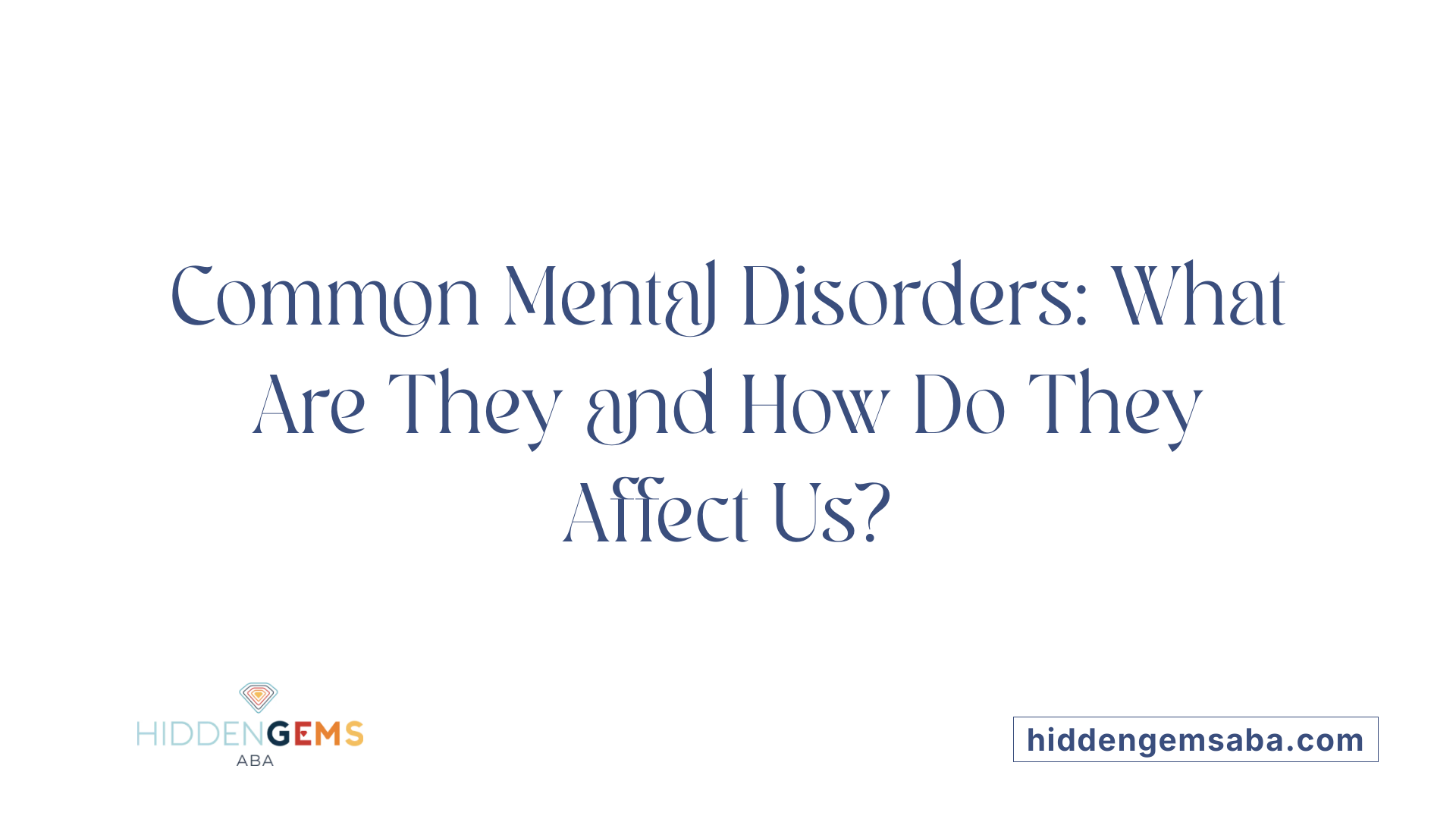
What are the most common types of mental health disorders worldwide?
Globally, the most prevalent mental health conditions are anxiety disorders and depression. These two categories affect hundreds of millions of individuals each year. Anxiety disorders encompass conditions such as generalized anxiety disorder, panic disorder, social anxiety disorder, and separation anxiety disorder. These conditions often manifest as excessive fear or worry and can significantly impair daily functioning.
Depression, characterized by persistent feelings of sadness, hopelessness, or loss of interest in activities, affects a large portion of the world’s population as well. It can lead to severe emotional and physical problems, including thoughts of suicide.
In addition to these, other major mental health conditions include bipolar disorder, which involves alternating episodes of depression and mania; schizophrenia, marked by persistent delusions and hallucinations; and eating disorders like anorexia nervosa, often starting in adolescence. Neurodevelopmental disorders such as autism spectrum disorder and ADHD also substantially impact cognitive and social development.
These disorders are not confined to specific regions or populations. They affect individuals regardless of age, gender, socioeconomic status, or cultural background. Recognizing their widespread occurrence highlights the importance of accessible mental health care and ongoing research into effective treatment options.
| Disorder Type | Estimated Affected Population | Description | Impact |
|---|---|---|---|
| Anxiety Disorders | 301 million | Excessive fear or worry, including phobias and panic attacks | Highly prevalent |
| Depression | 280 million | Persistent sadness, loss of interest | Major contributor to disability |
| Bipolar Disorder | 40 million | Mood swings between depression and mania | Significant impact |
| Schizophrenia | 24 million | Delusions, hallucinations, disorganized thinking | Chronic condition |
| Eating Disorders | 14 million | Anorexia, bulimia, binge-eating disorder | Often severe |
| Neurodevelopmental Disorders | Varies, particularly high in youth | Autism, ADHD, intellectual disabilities | Critical in childhood |
Understanding the variety and prevalence of these conditions emphasizes the need for global mental health strategies that are inclusive and accessible to all populations.
Research and Statistical Insights on Global Burden
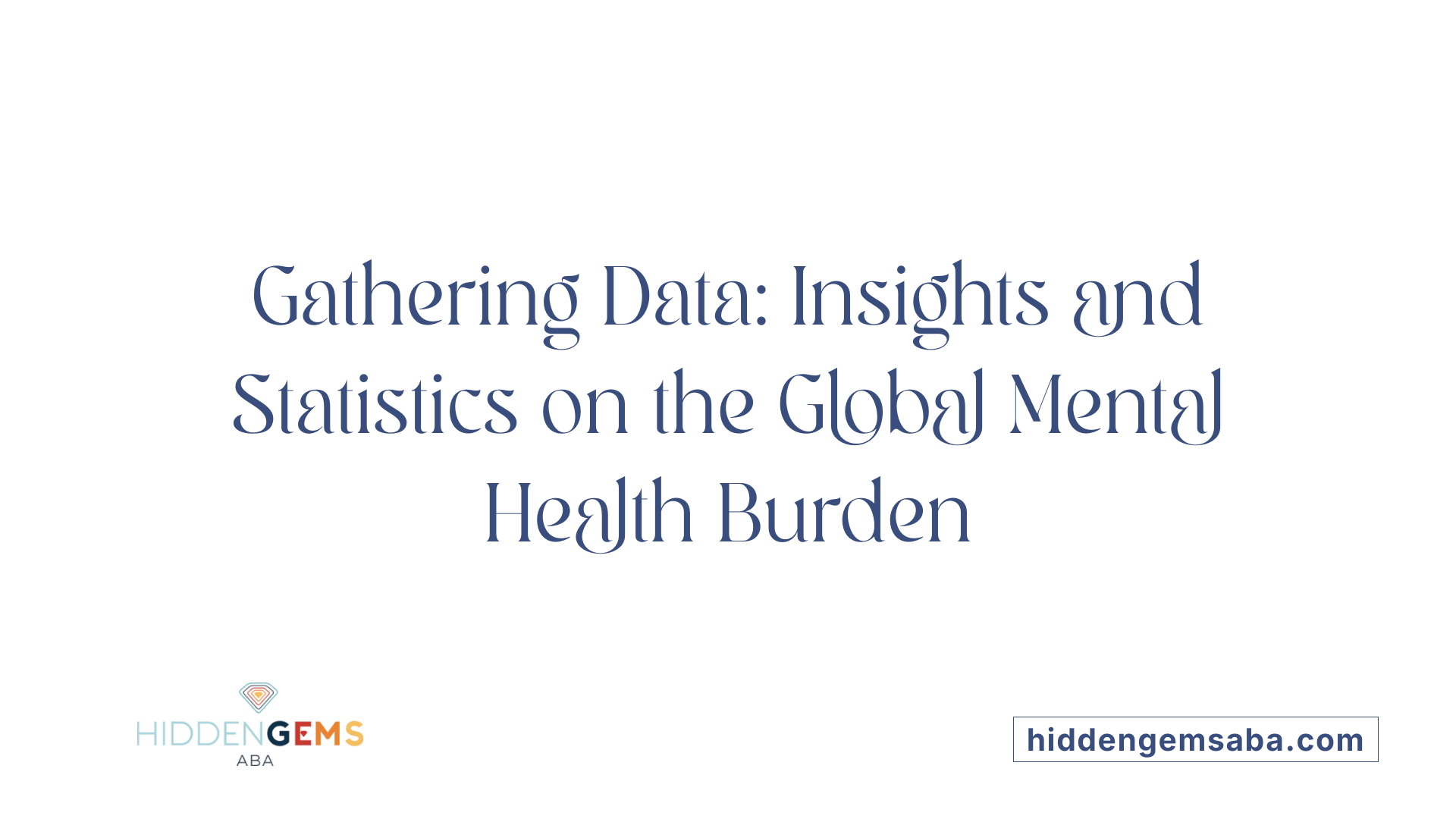
What are the latest statistical data and research findings on the global mental health burden?
Recent data reveal that approximately 970 million people worldwide suffered from mental disorders in 2019. Among these conditions, anxiety and depressive disorders are the most common, affecting 301 million and 280 million individuals respectively. The COVID-19 pandemic intensified this burden, with a 26% increase in anxiety and a 28% rise in depression cases during 2020. Research shows that mental health issues account for a large share of disability, contributing around 19% of all years lived with disability globally. Suicide, often linked to mental illness, ranks as the second leading cause of death among 10-24-year-olds, with over 700,000 lives lost annually. The distribution of mental health conditions varies geographically and demographically. Women are more prone to depression and anxiety, while men are more likely to experience substance abuse. Despite the high prevalence, a significant treatment gap exists—up to 70% of those with psychosis and over 75% with depression in low-income countries do not receive necessary care. Research emphasizes that the increasing trend in mental health issues calls for better data collection, targeted interventions, and reduction of stigma to improve treatment access and outcomes.
How does mental illness impact societies and economies worldwide?
The societal and economic consequences of mental health disorders are profound. Globally, the cost of untreated mental illness is estimated at $1 trillion annually, with the United States bearing approximately $193.2 billion in lost productivity alone. Depression plays a central role, being a leading cause of disability and affecting millions' ability to work and engage socially. Economically, mental health conditions are projected to cost the world around $16 trillion over the next decade—a staggering figure highlighting the widespread impact on economic growth and development. Families and communities also bear emotional and financial burdens, as untreated mental illnesses can lead to decreased quality of life and increased healthcare costs. Efforts to close treatment gaps and integrate mental health services into primary care are essential to mitigate these impacts.
| Aspect | Data/Statistics | Additional Details |
|---|---|---|
| Global prevalence | 970 million people (2019) | Includes all mental disorders, with anxiety and depression most common |
| Impact on disability | 19% of all YLDs | Depression ranks high as an disabling condition |
| Suicide annual deaths | Over 700,000 (2021) | Second leading cause among youth aged 15-29 |
| Treatment gaps | Up to 70% untreated worldwide | Higher in low-income countries |
| Economic cost | $1 trillion annually globally | Predicted to rise, reaching $16 trillion by 2030 |
| Cost to the U.S. | ~$193 billion in lost earnings | Due to depression and other mental health issues |
These insights underscore the critical need for global health strategies that improve data collection, expand treatment access, and reduce stigma to effectively address the growing mental health crisis.
Global Trends and Future Projections
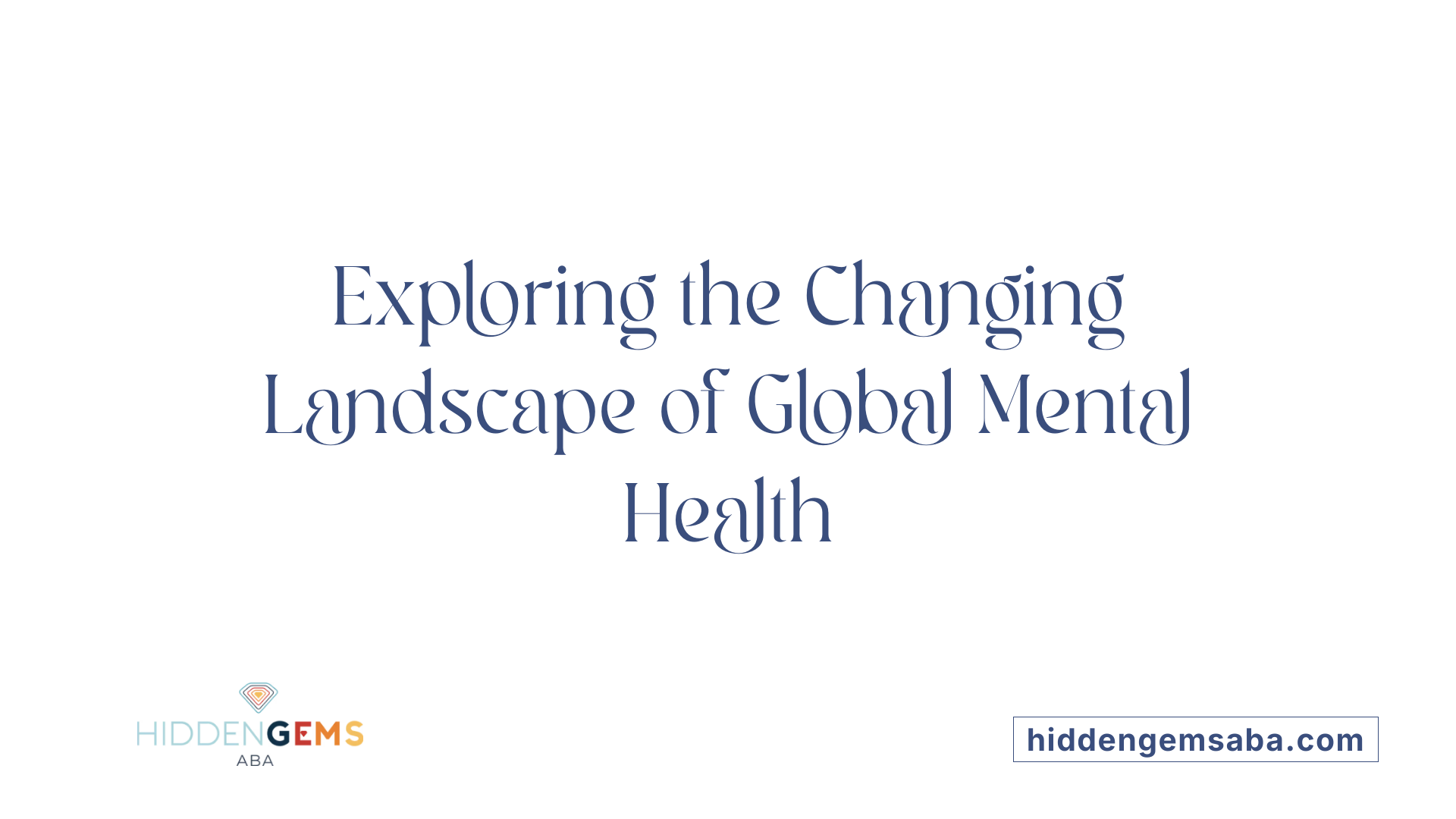
What are the current trends and patterns in mental health issues globally?
The landscape of mental health worldwide reveals both progress and ongoing challenges. From 1990 to 2019, age-standardized rates of incidence and disability-adjusted life years (DALYs) associated with mental disorders have slightly decreased, suggesting some improvements in managing these conditions. However, the overall number of cases continues to rise, driven largely by global population growth.
Mental health issues are most prevalent among adolescents and young adults. The peak age for the onset of mental disorders is around 15 years old, with the median age being 19 for men and 20 for women. Anxiety disorders, depression, substance use, and mood disorders dominate the prevalence statistics, often beginning early in life. More than 50% of all lifetime mental illnesses begin by age 14, and 75% by age 24.
Prevalence patterns also show disparities based on age, sex, and socioeconomic status. For instance, anxiety and depressive disorders are more common during adolescence, while substance abuse tends to peak in early adulthood. Women are more likely to experience depression, phobias, and PTSD, whereas men report higher cases of alcohol abuse.
Socioeconomic inequalities significantly influence mental health risk factors. Lower-income groups bear a higher burden, with substantial gaps in access to quality care. Despite reductions in the age-standardized rates of mental health disorders, the absolute case numbers, especially among children, youth, and vulnerable populations, underscore the persistent global challenge.
Looking ahead, the future of mental health involves a nuanced approach that combines biological, social, and cultural perspectives. Innovations in prevention, early intervention, and treatment are vital for addressing the complex and evolving nature of mental disorders. Addressing disparities, enhancing mental health care infrastructure, and reducing stigma remain crucial as the global community strives to mitigate the substantial and growing burden of mental health issues.
Public Health Challenges and Global Responses
What are the public health challenges related to mental health worldwide?
Mental health issues pose significant global challenges, affecting hundreds of millions of people across all age groups and socioeconomic backgrounds. Approximately 1 in 3 women and 1 in 5 men will face major depression at some point in their lives, highlighting the widespread nature of these conditions.
The burden of mental disorders is substantial, contributing around 22% to the global disease burden mainly through years lived with disability. This not only impacts individual well-being but also places heavy demands on healthcare systems and economies, with an annual global cost of about $1 trillion due to depression and anxiety alone.
Early onset of mental health issues is common, with most cases beginning during childhood, adolescence, or young adulthood. The median age of first onset is 19, while the peak occurs in individuals aged 24-39 years. This early emergence, coupled with high recurrence rates, compounds the societal and economic impacts.
Moreover, mental disorders are heavily associated with increased risks of comorbid health problems, such as cardiovascular and metabolic diseases. For example, individuals with serious mental illness are twice as likely to develop such conditions.
A further complication arises from widespread hurdles in care access. In low- and middle-income countries, over 75% of affected individuals lack access to treatment, leading to untreated conditions and preventable suffering. Stigma and societal misconceptions often discourage many from seeking help, and policies in many regions are insufficient or poorly implemented.
The COVID-19 pandemic exacerbated these challenges, with reports of a 25-28% increase in anxiety and depression globally during 2020. Vulnerable populations, including healthcare workers, refugees, and migrant groups, faced heightened risks.
Addressing these public health issues necessitates a multi-pronged approach: expanding evidence-based interventions, leveraging innovative strategies like task-shifting to non-specialist health workers, and deploying digital health solutions. Equally important are policies aimed at improving mental health literacy, reducing stigma, and ensuring equitable access to care worldwide.
In summary, the global public health challenge of mental health requires concerted international effort and resource allocation to close existing care gaps, dispel harmful stereotypes, and implement effective prevention and treatment strategies.
International Variations in Mental Healthcare Capacity and Outcomes
How do mental health statistics compare across different countries and regions?
Mental health burdens and treatment availability differ widely across the globe. High-income countries tend to have more mental health resources, yet they also report higher prevalence rates of mental health diagnoses. For example, in 2016, the United States had the highest reported rate among 11 high-income nations, with about 23% of adults affected by mental health issues such as depression and anxiety.
Surveys like the World Mental Health (WMH) initiative show that lifetime prevalence of mental disorders can range from approximately 18% to over 36%, depending on the country. Variations are also evident in the severity and treatment access; high-income countries generally have more mental health professionals and better treatment infrastructure.
In low- and middle-income countries, the treatment gap is more pronounced. While mental health disorders are just as prevalent, over 75% of sufferers lack access to adequate care. Availability of psychiatrists, psychologists, and hospital beds can be scarce, leading to untreated mental health conditions and higher rates of disability.
Furthermore, rates of severe mental illnesses like psychosis are disproportionately untreated in poorer nations — only about 12% of people with psychosis receive treatment in low-income settings, compared to over 70% in wealthier countries.
These disparities reflect systemic issues such as resource allocation, social stigma, and cultural attitudes toward mental health. They also impact outcomes, with untreated disorders contributing to increased disability, premature death, and economic costs.
| Country Group | Prevalence (%) | Treatment Access | Professional Density per 100,000 | Notable Challenges |
|---|---|---|---|---|
| High-income countries | 18-36% | Higher | 45+ | Resources still insufficient for some |
| Low-income countries | 18-36% | Very low (<20%) | 1.4 | Major treatment gaps and stigma |
| Global average | ~24.85% | Varies | Varies | Significant disparities |
Understanding these differences underscores the importance of expanding mental health services worldwide and reducing systemic barriers.
Towards a Global Mental Health Equity
Addressing the vast and complex landscape of mental health requires concerted global efforts to improve data collection, expand treatment access, reduce stigma, and tailor culturally sensitive interventions. By recognizing the scale of the problem and fostering international collaboration, policymakers and healthcare providers can work towards a future where mental health support is accessible, effective, and equitable for all populations.
References
- Mental disorders - World Health Organization (WHO)
- Half of World's Population Will Experience a Mental Health Disorder
- Mental Health By the Numbers
- Mental Illness - National Institute of Mental Health (NIMH)
- Mental Health - Our World in Data
- The Global Mental Health Crisis: 10 Numbers to Note - Project HOPE
- Global Mental Health Statistics | Children's HopeChest
- Worldwide Prevalence and Disability From Mental Disorders Across ...
- Changing trends in the global burden of mental disorders from 1990 ...
- Mental Health Disorder Statistics | Johns Hopkins Medicine





